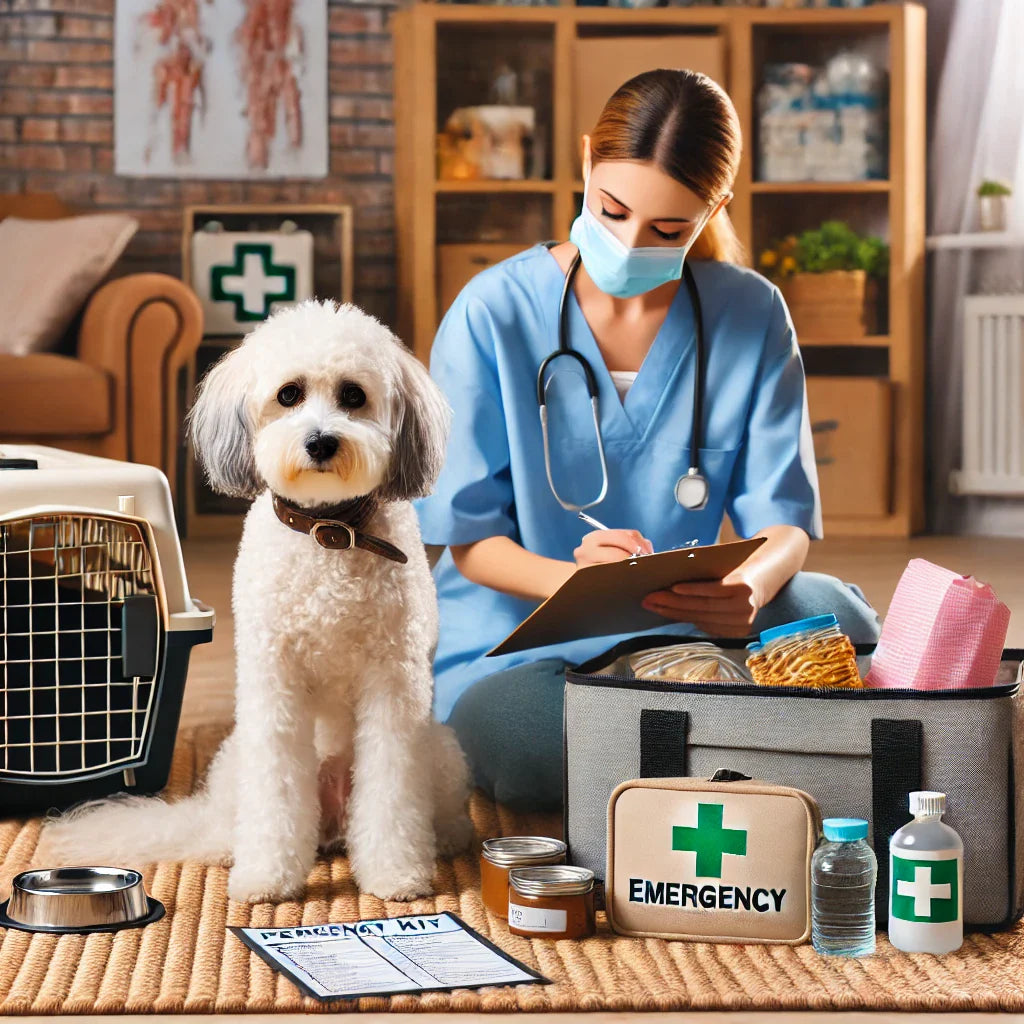
Emergency Preparedness for Pets: A Complete Guide to Pet Safety and Disaster Readiness
Share

Introduction: Why Pet Emergency Preparedness is Essential
Emergencies strike without warning, and being prepared can save your pet’s life. Whether it's a natural disaster, fire, or medical crisis, knowing how to protect your pet ensures their safety and well-being in any unexpected situation.
What You’ll Learn in This Guide:
✔ How to create a pet emergency kit with essential survival items
✔ Steps for pet disaster evacuation planning
✔ How to find pet-friendly emergency shelters
✔ First aid techniques for pet injuries
✔ Tips to keep your pet calm in emergencies
🐾 Ensure your home is a safe space for your pet—preparation is the key to safeguarding your pet’s life.
1. Understanding Emergency Preparedness for Pets
📌 What is Pet Emergency Preparedness?
Pet emergency preparedness means having a clear, actionable plan to ensure your pet’s survival and comfort during disasters. This includes:
✔ Creating a pet emergency kit with food, water, and medical supplies
✔ Developing a pet evacuation plan for natural disasters
✔ Identifying pet-friendly shelters in case of evacuation
✔ Training pets to handle stressful situations calmly
🐾 Be ready for emergencies with this life-saving guide—planning ahead makes all the difference.
2. Creating a Pet Emergency Kit: What to Include?
📌 What Should Be in a Pet Emergency Kit?
Your pet emergency kit should contain everything your pet needs for survival for at least 5-7 days.
🚨 Essential Items:
✔ Food & Water – Pack a week’s supply of pet food and bottled water
✔ First Aid Kit – Include bandages, antiseptic wipes, and emergency medications
✔ Identification & Medical Records – Keep a microchip ID, vet contacts, and vaccination records
✔ Comfort Items – Bring blankets, toys, and treats to reduce stress
✔ Sanitation Supplies – Waste bags, litter trays, and cleaning wipes
🐾 Keep your pet emergency kit updated and accessible—preparedness ensures survival.
3. Developing an Effective Pet Evacuation Plan
📌 How to Prepare for Pet Evacuations?
In an emergency, knowing how to evacuate safely can be life-saving for your pet.
🚨 Pet Evacuation Checklist:
✔ Map Out Safe Routes – Identify multiple exit strategies from your home
✔ Locate Pet-Friendly Shelters – Many evacuation centers don’t accept pets
✔ Train Your Pet for Evacuations – Practice carrier training and car rides
✔ Emergency Contact List – Keep a list of pet-friendly hotels, shelters, and vets
🐾 Prepare a pet evacuation plan today—acting fast ensures your pet’s safety.
4. Finding Pet-Friendly Emergency Shelters
📌 Where Can You Take Your Pet During a Disaster?
Not all evacuation centers accept pets, so finding pet-friendly shelters is crucial.
🚨 Where to Look for Pet-Friendly Shelters:
✔ Animal Shelters – Some accept displaced pets in emergencies
✔ Hotels & Lodgings – Many pet-friendly hotels accommodate evacuees
✔ Friends & Family – Have backup options if public shelters aren’t available
🐾 Identify pet-friendly emergency shelters—secure a safe space for your pet before disaster strikes.
5. First Aid for Pets in Emergencies
📌 How to Provide Emergency First Aid for Pets?
🚨 Basic First Aid for Pets:
✔ Choking Assistance – Learn the Pet Heimlich Maneuver
✔ CPR for Pets – Learn how to perform pet CPR
✔ Wound Care – Clean minor cuts with antiseptics
✔ Heatstroke Prevention – Move to shade, apply cool water
🐾 Expand your first aid knowledge beyond the Heimlich maneuver—knowing first aid can save your pet’s life.
6. Keeping Pets Calm During an Emergency
📌 How to Reduce Pet Anxiety in a Crisis?
🚨 Tips to Keep Pets Calm:
✔ Use Familiar Items – Bring their favorite toy, blanket, or bed
✔ Speak Softly & Stay Calm – Pets sense human emotions
✔ Apply Pheromone Sprays – Helps reduce stress in dogs and cats
✔ Minimize Exposure to Noise – Keep pets away from loud sounds
🐾 Help your pet stay calm during emergencies—a calm pet is easier to manage in crisis situations.
7. Emergency Pet Identification: Microchipping & Tags
📌 How to Ensure You Can Find Your Pet If Lost?
🚨 Best Practices for Pet Identification:
✔ Microchip Your Pet – Permanent ID with up-to-date contact info
✔ Secure ID Tags – Include your phone number and address
✔ Keep Digital Copies – Store vaccination records and ID details on your phone
🐾 Microchipping’s impact on lost pet recovery—proper identification can reunite you with your pet.
8. Long-Term Disaster Planning for Pet Owners
📌 How to Stay Prepared Year-Round?
🚨 Regular Updates for Pet Emergency Readiness:
✔ Check Emergency Kits Every 6 Months – Rotate food, water, and medications
✔ Update Contact Information – Keep veterinary and emergency contacts current
✔ Practice Emergency Drills – Familiarize pets with carriers, leashes, and exits
🐾 Be proactive with pet disaster planning—consistent preparation keeps your pet safe.
